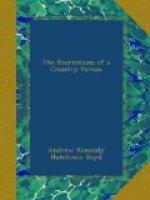At either end of the sarcophagus is a closely-fitting fire-proof door, that farthest from the chapel entrance communicating with a chamber which projects into the chapel and adjoins the end of the shrine. Here are the attendants, who, unseen, conduct the operation. The door at the other end of the sarcophagus, with a corresponding opening in the inner and outer shrine, is exactly opposite a slab of marble on which the coffin is deposited when brought into the chapel. The funeral service then commences according; to any form decided on. At an appointed signal the end of the coffin, which is placed just within the opening in the shrine, is removed, and the body is drawn rapidly but gently and without exposure into the sarcophagus: the sides of the coffin, constructed for the purpose, collapse; and the wooden box is removed to be burned elsewhere.
Meantime the body is committed to the flames to be consumed, and the words ‘ashes to ashes, dust to dust’ may be appropriately used. The organ peals forth a solemn strain, and a hymn or requiem for the dead is sung. In a few minutes, or even seconds, and without any perceptible noise or commotion, all is over, and nothing but a few pounds or ounces of light ash remains. This is carefully collected by the attendants of the adjoining chamber: a door communicating with the chapel is thrown open; and the relic, enclosed in a vase of glass or other material, is brought in and placed before the mourners, to be finally enshrined in the funeral urn of marble, alabaster, stone, or metal.
Speaking for myself, I must say that I think it would cause a strange feeling in most people to part at the chapel-door with the corpse of one who had been very dear, and, after a few minutes of horrible suspense, during which they should know that it was burning in a fierce furnace, to see the vessel of white ashes brought back, and be told that there was all that was mortal of the departed friend. No doubt it may be weakness and prejudice, but I think that few could divest themselves of the feeling of sacrilegious violence. Better far to lay the brother or sister, tenderly as though still they felt, in the last resting-place, so soft and trim. It soothes us, if it does no good to them, and the sad change which we know is soon to follow is wrought only by the gentle hand of Nature. And only think of a man pointing to half-a-dozen vases on his mantelpiece, and as many more on his cheffonier, and saying, ’There the wicked cease from troubling, and there the weary are at rest!’




